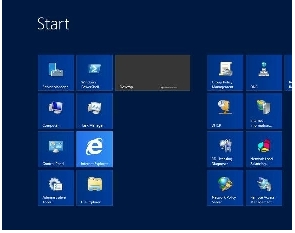
The general availability of Windows Server 2012 today will see Microsoft’s strongest push yet to target VMware users.
Microsoft describes the new operating system (OS) – an update to the three-year-old Windows Server 2008 OS – as a cloud operating system. In the Gartner research paper, Prepare for Windows Server 2012, analyst Carl Claunch noted: “Microsoft has designed Windows Server 2012 to allow developers to write one application that is able to run in multiple, dissimilar environments. IT operations groups can move these newly-written applications between different environments and locations with relative ease – in many cases even permitting them to move or split across multiple areas while they are running, without disruption to the users.”
“We want people to rethink their datacentre and to transform IT through a cloud OS,” said Mike Shutz, general manager of product marketing within Microsoft’s Windows Server management team.
Regarding the VMware competition, he said, “From a purely software-licence perspective, Windows Server 2012 is significantly cheaper, since it offers unlimited virtualisation in the datacentre edition of the OS.”
He said that almost any workload will run on Windows Server 2012/Hyper-V. For instance, Microsoft has tested a 64-core virtual machine with 1TB of memory. “All Microsoft products have been tested on Windows Server 2012 with Hyper-V and you can virtualise 99% of SQL Server workloads.
“Rather than use physical servers, you can create a shared pool of resources,” he said. Virtualisation through Hyper-V is the cornerstone of Windows Server 2012. The product also offers server and network virtualisation, allowing businesses to create software-defined networks with virtual IP addresses. With these capabilities, the new OS could be deployed within a datacentre to provide infrastructure on-demand.
Read more about Windows Server 2012 Windows Server 2012: inside Microsoft's Enterprise Server OS Windows Server 2012 review: Should I upgrade? Test your Windows Server 2012 knowledge Windows Server 2012 upgrades may impact x86 server market Windows Storage Server 2012 upgrades features for enterprises
In fact, this is exactly what Newham Borough Council is hoping to do. A long-term Microsoft customer, the council’s CIO Geoff Connell, is also CIO at neighbouring council Havering,
Chris Losch, enterprise infrastructure architect, at Newham Borough Council said, “We’re looking at the network capabilities in Windows Server 2012, to overlap IP addresses onto a single cloud across Newham and Havering.” This network virtualisation would allow the two local authorities to share their computing resources without having to reconfigure existing enterprise applications.
Newham is on the Microsoft Rapid Deployment Programme (RDP) and has been looking at the new OS for the last six months. It has actually rolled out a full virtualised environment, based on Windows Server 2012 and Hyper-V, to support remote workers during the Olympics. It ramped up from 200 virtual machines running on Windows Server 2008 R2, to 1,200 VMs using Windows Server 2012.
Losch said Newham has also been using the de-duplication feature in Windows Server 2012, to cut down on enterprise storage upgrades. For instance, the storage required for image scans of parking infringements has been cut by 25%, thanks to the de-duplication feature. “Microsoft Word, Excel and PowerPoint documents – such as case work data from social care – has gone down by 50-60%,” he added.
Newham Borough Council’s experience with running Windows Server 2012 for a shared service is reflected in research from analyst Freeform Dynamics. Andy Buss, service director at analyst Freeform Dynamics, said, “There is a move within IT service delivery to provide a shared service environment using highly automated management.”
To lower the cost of building virtual server farms on Windows Server 2012 using Hyper-V, Microsoft has included a feature called Shared-Nothing Live Migration. This allows IT departments to deploy resilient virtual server environments using low-cost direct access storage rather than complex storage arrays.




